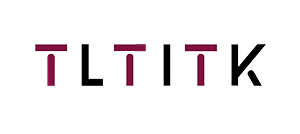Email format error
Email cannot be empty
Email already exists
6-20 characters(letters plus numbers only)
The password is inconsistent
Email format error
Email cannot be empty
Email does not exist
6-20 characters(letters plus numbers only)
The password is inconsistent

News
Here, you can describe a piece of text you want to express

The Future of Smart Education: How Nanoboards and Interactive Whiteboards Enhance Teaching
In the rapidly evolving landscape of education, technology plays a pivotal role in reshaping teaching and learning experiences. Among the most innovative advancements are the emergence of nanoboards and interactive whiteboards (IWBs), two smart tools that are revolutionizing classroom environments and how educators deliver content. These technologies not only increase student engagement but also foster more interactive and dynamic teaching methods. In this blog post, we'll explore how these tools are enhancing teaching effectiveness and transforming the way educational content is presented.
What are Nanoboards and Interactive Whiteboards?
Before diving into their impact on teaching, it’s important to define what nanoboards and interactive whiteboards are.
-
Nanoboards are the latest innovation in educational technology. These boards use cutting-edge nanotechnology to create ultra-thin, lightweight, and highly sensitive touch surfaces. Unlike traditional blackboards or whiteboards, nanoboards allow for more seamless interaction, often incorporating features like handwriting recognition, voice command integration, and connectivity to cloud-based platforms.
-
Interactive Whiteboards (IWBs) are large, touch-sensitive display boards that allow teachers and students to interact directly with digital content. Often connected to a computer or projector, IWBs enable users to write, draw, manipulate objects, and engage with multimedia elements in real-time.
While both tools share some similarities, such as offering digital and interactive capabilities, their applications and integration into classrooms can have distinct impacts on the overall teaching and learning experience.
How Nanoboards and Interactive Whiteboards Enhance Teaching Effectiveness
1. Engaging and Interactive Content Delivery
One of the most significant benefits of nanoboards and IWBs is their ability to make lessons more engaging. With traditional teaching methods, educators often rely on verbal explanations and printed materials. In contrast, nanoboards and IWBs can integrate text, images, videos, and audio in real-time, allowing teachers to present content in a much more interactive and engaging way.
For example, a history teacher might show historical videos, incorporate 3D models of ancient artifacts, or engage students in real-time quizzes and polls, all while using the interactive features of the board. This multimodal approach caters to different learning styles, ensuring that visual, auditory, and kinesthetic learners are all engaged.
2. Promoting Collaboration and Student Participation
Interactive whiteboards encourage active participation, making lessons more dynamic. Students can take turns solving problems on the board, work in teams to answer questions, and even contribute their own multimedia content. This collaborative learning fosters communication, critical thinking, and teamwork skills among students.
Nanoboards take this one step further by often incorporating more advanced features like screen-sharing capabilities, instant feedback, and personalized learning pathways. These features allow students to collaborate on projects, work independently on exercises, and receive real-time assessments of their understanding.
3. Improved Accessibility and Flexibility
Both nanoboards and IWBs provide more flexible and accessible ways to present information. For students with different needs, such as those with visual impairments, these boards can adjust text size, contrast, and background colors. They also allow teachers to upload lesson content to cloud-based platforms, meaning students can access materials from home or any other device, improving learning continuity.
Moreover, these tools enable teachers to adapt lessons on the fly, modifying content based on student responses or class progress. Whether it's adjusting the difficulty of a math problem, re-explaining a concept, or integrating extra resources, nanoboards and IWBs make it easier for teachers to personalize instruction.
4. Real-Time Assessment and Feedback
In traditional classrooms, feedback is often delayed or limited to certain activities like assignments or exams. With interactive whiteboards, teachers can quickly assess student understanding through activities like quizzes, polls, or interactive exercises. Instant feedback is one of the most powerful features of these tools, allowing teachers to adjust instruction and provide support where it's needed most.
Nanoboards often enhance this ability further with sophisticated data analytics, allowing teachers to track student performance and engagement in real-time. This helps educators pinpoint areas of difficulty and adapt their teaching strategies accordingly, making learning more efficient.
How Nanoboards and Interactive Whiteboards Transform Content Presentation
The way content is presented on nanoboards and IWBs also plays a significant role in improving teaching effectiveness.
-
Multimedia Integration: These tools can display not just text, but also videos, animations, images, and audio, making lessons far more engaging and interactive than traditional methods. For example, in a biology class, students can watch a time-lapse video of plant growth, view interactive diagrams of human anatomy, or manipulate 3D models of molecules.
-
Cloud Connectivity and Digital Resources: Both nanoboards and IWBs are often connected to the cloud, which allows teachers to access and share a wealth of digital resources, from lesson plans and worksheets to educational apps and websites. This also enables them to collaborate with other educators or share resources with students more efficiently.
-
Interactive Learning Tools: Nanoboards and IWBs often come with built-in apps and tools that facilitate learning. From virtual whiteboard pens to interactive geometry tools, these features make learning more hands-on and immersive. Students can manipulate objects, draw diagrams, and solve problems directly on the board, fostering deeper understanding through active participation.
Conclusion
The rise of nanoboards and interactive whiteboards marks a significant shift in how teaching and learning are approached. These technologies offer educators the ability to deliver more engaging, interactive, and personalized lessons, fostering an environment where students are more involved and motivated to learn. Through real-time assessments, multimedia integration, and improved collaboration, these tools are revolutionizing the classroom and ensuring that students are better prepared for the future.
As education continues to embrace technology, the use of nanoboards and interactive whiteboards is likely to become a standard in classrooms worldwide, paving the way for smarter, more efficient, and more inclusive teaching practices.

